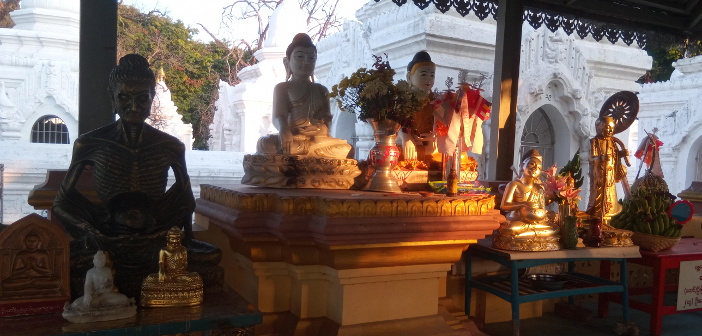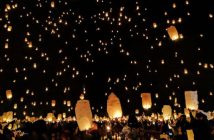Myanmar is not an obvious destination for a family holiday. The country formerly known as Burma was closed to the world from 1962 to 1988, and it’s probably fair to say for most people, it’s somewhere you only visit after you’ve already been to everywhere else in South-East Asia… which was pretty much the case for us. But that’s a shame, as it’s a beautiful, unspoilt country, with many astonishing sights and friendly people.
We flew into Mandalay, the commercial and cultural center of northern Myanmar. The city was made famous by Rudyard Kipling’s poem “On the road to Mandalay…” which made it a byword for exotic glamor. It’s a relatively modern city though, founded in 1857 by the last king of an independent Burmese kingdom, and it was bombed by both sides during World War Two, leaving the royal palace completely destroyed. The road to Mandalay is mostly a dirt track. However within the dusty, sprawling modern city are the ruins of three ancient capitals, and some breathtaking temples.
With only a day and a half to explore, we headed first to the north-eastern corner of the royal palace. (The palace site occupies over a thousand acres at the heart of Mandalay, and is visible at night as a huge dark square amid the city lights. Some of the buildings have been reconstructed, and there’s a museum on the site too, but we decided to give it a miss.) This is the location of Mandalay Hill, after which the city is named, and the stunning Kuthodaw Pagoda.
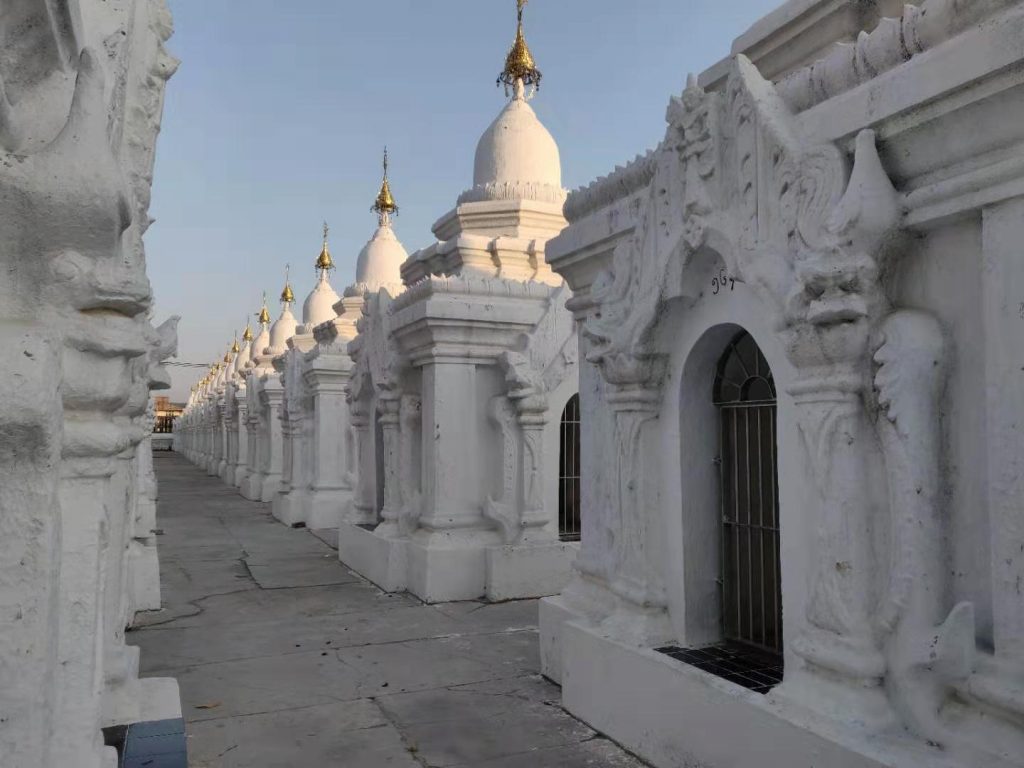
Kuthodaw Pagoda
Kuthodaw is known as the “World’s Biggest Book.” The pagoda itself is surrounded by smaller stupas, each housing a marble slab on which is carved a Buddhist sutra. Collectively the slabs contain the whole “Tripitaka”, the canon scriptures of Theravada Buddhism.
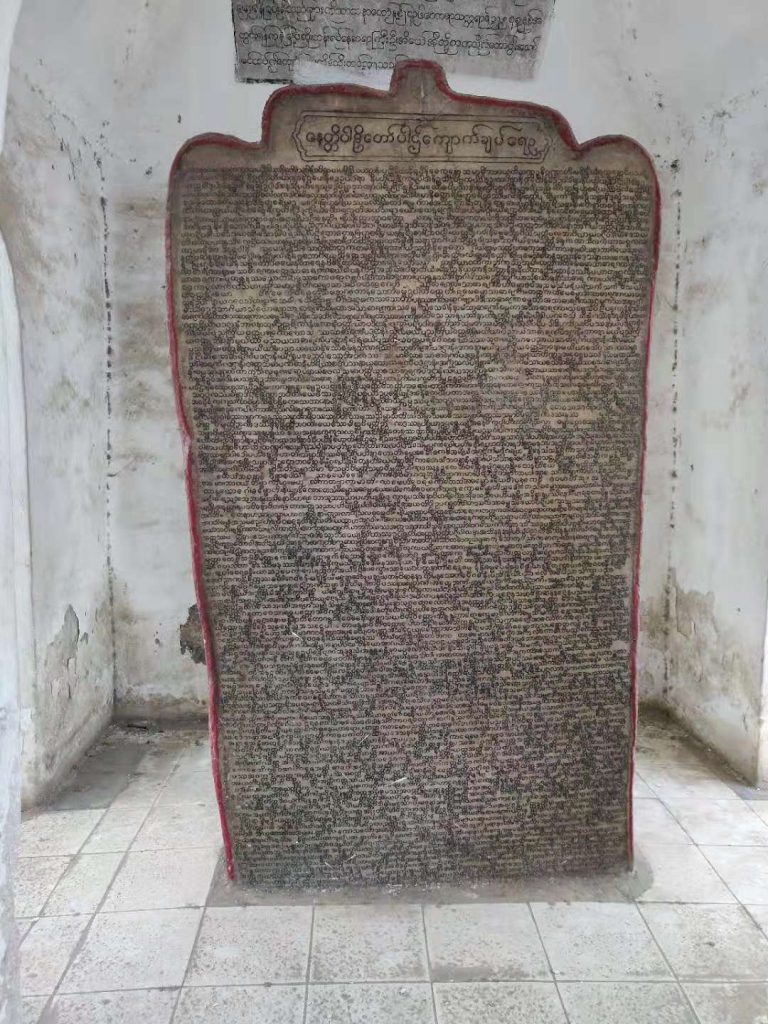
One of the 729 stone inscriptions that give Kuthodaw Pagoda the title of “world’s biggest book”
Around the same area are the Kyauktawgyi Buddha Temple, which contains a 900 tonne iron Buddha, and the Shwenandaw Monastery, with its celebrated teak carvings. But we planned to climb Mandalay Hill in time for sunset.
Like most holy sites in Myanmar, you have to take off your shoes and socks when entering Mandalay Hill. I found this heightened my awareness and appreciation of the act of climbing; walking in bare feet makes you more mindful, watching where you tread and feeling the dust, the hot concrete and the cool tiles. The walkway is lined with stalls selling drinks, souvenirs and Buddha statues. For someone from a Western background it seems an odd combination of commercialism and spirituality, but it’s a common sight in the Buddhist world, and the reverence for the shrines is real.
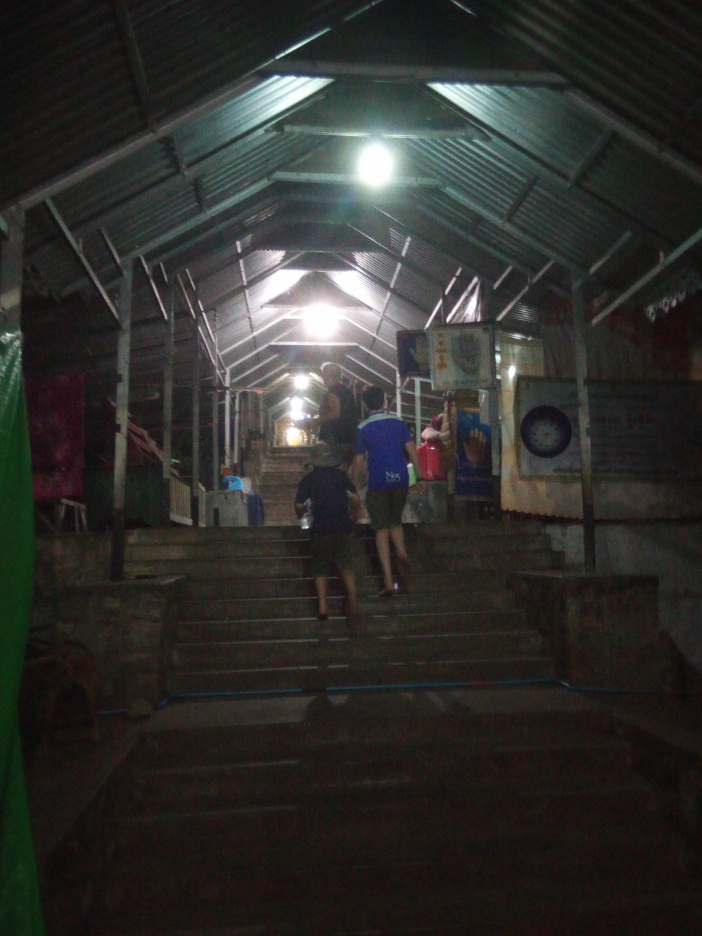
Climbing Mandalay Hill
After a lung-busting climb we arrived at a standing Buddha. “Here we are,” I said, but I was being ludicrously optimistic. it was only the first statue on a long, winding path, dotted with shrines and pagodas. The sun set and darkness had fallen by the time we finally reached the top. The views of the city, amid the fragrance of incense, made the walk worthwhile.
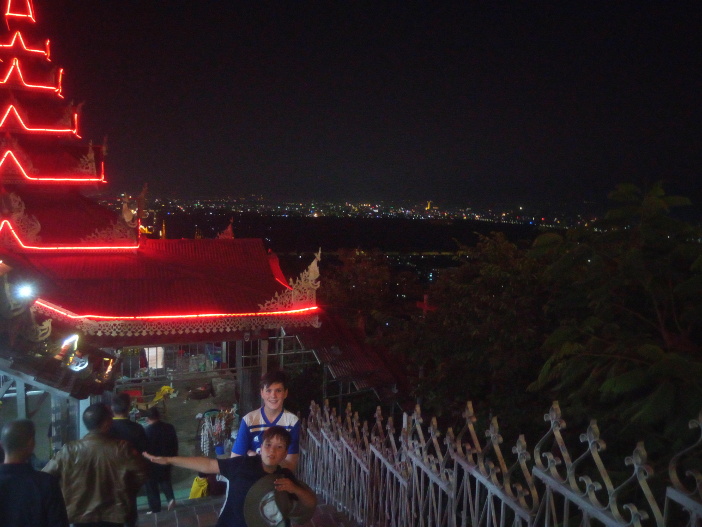
Mandalay Hill offers spectacular views of the city at night- note the dark square of the old palace area
Photos: Andrew Killeen, Karen Killeen

